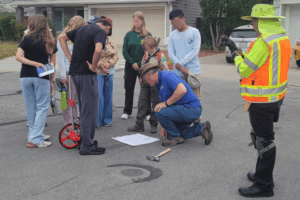For any development project, from a single-lot new build to a multi-acre commercial expansion, the permitting process is the critical bridge between a great idea and a shovel in the ground. In California, this bridge is often complex, multi-layered, and can be a significant source of project delays and frustration if not managed correctly.
The state’s intricate web of environmental regulations, building codes, and jurisdiction-specific rules means that a project’s success often hinges on a deep understanding of how to navigate the local permitting landscape.
The Phases of the California Permitting Journey
While the specifics vary by city and county, the permitting process generally follows a predictable path:
- Entitlement and Planning: This is the first and often most challenging phase. It involves securing “entitlements,” which are the legal approvals for a specific land use. This could include a conditional use permit, a zone change, or a subdivision map. During this phase, projects are subject to review under the California Environmental Quality Act (CEQA), which can require an environmental exemption, a Negative Declaration, or, for larger projects, a full Environmental Impact Report (EIR).
- Plan Check and Agency Review: Once entitlements are secured (or concurrently for many projects), your detailed engineering plans are submitted to the local building and planning departments for review. This is where civil engineers, architects, and other design professionals work to ensure the plans comply with all applicable building codes, zoning ordinances, and design standards. Your plans will be routed to various departments, including Fire, Public Works, Water, and Sanitation, for their approvals.
- Permit Issuance: After all agency comments have been addressed, fees are paid, and all required documents are finalized, the local jurisdiction will issue the necessary permits (e.g., building permits, grading permits, encroachment permits). This is the official green light to begin construction.
- Inspections and Final Sign-Off: Throughout construction, city or county inspectors will visit the site to ensure that the work is being built in strict accordance with the approved plans. The project is officially complete once all required inspections have been passed and a final Certificate of Occupancy is issued.
Common Permitting Challenges (and How to Avoid Them)
While the process sounds straightforward on paper, it is fraught with potential pitfalls that can lead to significant delays and budget overruns:
- Jurisdictional Variability: Rules and submittal requirements can be drastically different between neighboring cities and counties. What is standard in Palo Alto may be non-compliant in San Jose.
- Regulatory Complexity: A single project may require permits from multiple agencies, including the city, the county, the regional water board, and others. The sequencing of these approvals can be a complex puzzle.
- CEQA Review: For discretionary projects, the CEQA process can be a major source of delays. An incomplete or poorly prepared CEQA document can add months or even years to a project’s timeline, especially if a full EIR is required.
- Incomplete or Non-Compliant Submittals: The most common reason for a plan check rejection is an incomplete application or plans that do not meet local code requirements. This leads to a cycle of revisions and resubmittals that can be frustrating and time-consuming.
The Civil Engineer’s Role: Your Guide Through the Maze
Successfully navigating this process requires more than just a well-drawn set of plans—it requires a strategic partner who understands the intricate relationship between engineering, regulation, and local governance. A skilled civil engineer is your essential guide through the permitting maze.
At Underwood & Rosenblum, our civil engineers specialize in the entitlement and permitting processes across the Silicon Valley and Northern California. We help you by:
- Early-Stage Feasibility: We start by reviewing your project against local zoning and code requirements to identify potential red flags and opportunities before any significant design work begins.
- Strategic Planning: We help you develop a clear permitting strategy, identifying all required permits and creating a logical sequence for submittals to minimize delays.
- Expert Plan Submittal: We prepare comprehensive and code-compliant civil engineering plans—including grading, drainage, and utility plans—that are designed to sail through agency review.
- Agency Coordination: We act as your liaison, communicating directly with city and county staff, responding to their comments, and advocating on your behalf to ensure a smooth review process.
- Streamlining CEQA: We understand the CEQA framework and can help you identify a clear path to compliance, whether through an exemption or a more detailed environmental review, to keep your project on schedule.
Don’t let the permitting process be a roadblock to your project’s success. Contact Underwood & Rosenblum today to partner with a civil engineering firm that has the expertise and local knowledge to guide you through California’s complex regulatory landscape.




